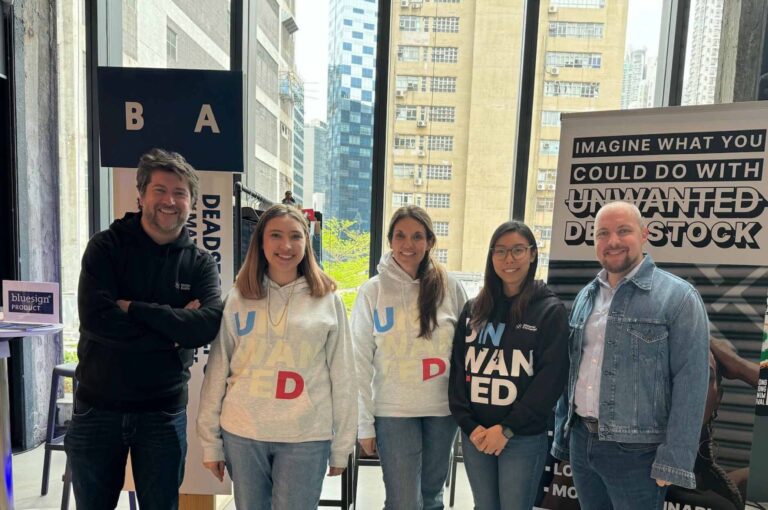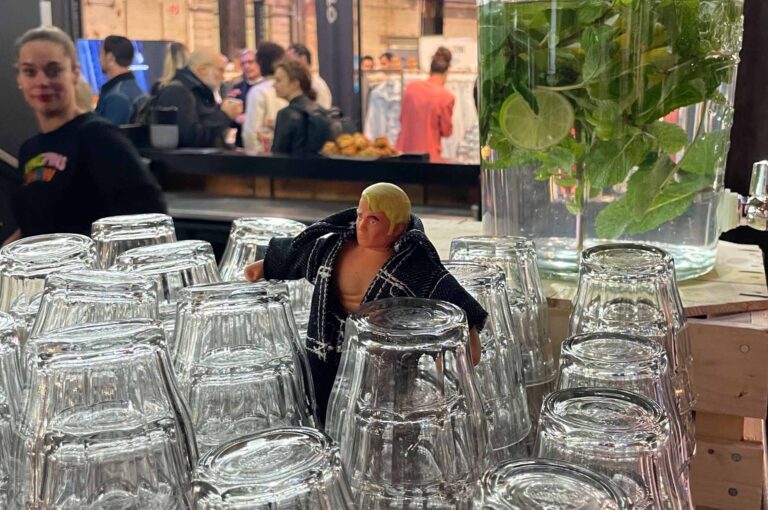Sustainability is an ever-evolving theme every future-facing organisation is starting to unpack, otherwise known as the “eco awakening” specifically in the materials industry. The most practical thing to consider is stopping excess waste and pollution. Up until now, brand equity was everything; however, this is quickly being replaced by consumer perception and values, relationships and customer experience.
Beyond that, the industry will evolve further. What will be the future role for creators and designers globally? And in what ways will the industry evolve over time? How will materials play a role in a future-facing creation process? Many material suppliers and textile mills may be rethinking their processes or reducing collections to offer their customers a more sustainable approach. The ultimate goal is achieving excellence in all aspects (i.e., product, people and manufacturing).
There will still be businesses that hop on to the eco bandwagon with non-committed design strategies and marketing campaigns that don’t bear longevity in mind. Conversely, I think the concept of making the conversation inclusive and open-minded, ensuring it is about progress not perfection, is essential. There is a fundamental importance in shifting from a linear to a circular approach, whereby waste and pollution are designed out, while materials and products are kept in use for as long as possible. This supports the industry in heading toward a utopia of natural systems and regenerated practices.
Big brand names are beginning to incorporate various innovative alternatives to rework the way production is handled. New materials are being produced that blur the boundaries between, science, technology, and nature. As a result, we are able to write new narratives and create fresh perspectives through the use of innovative materials being developed and made scalable. This includes everything from using volume waste from agricultural crops, such as banana stems, pineapple leaves, and fruit skins, to looking at extracting from natural ecologies utilising algae or fungi. Regenerative agriculture, plant-based materials and bio fabrics are increasingly popular.
Kasper Rorsted, CEO of Adidas, said, “Consumers are looking at the fashion industry with more scrutiny, which will force the industry to change.”
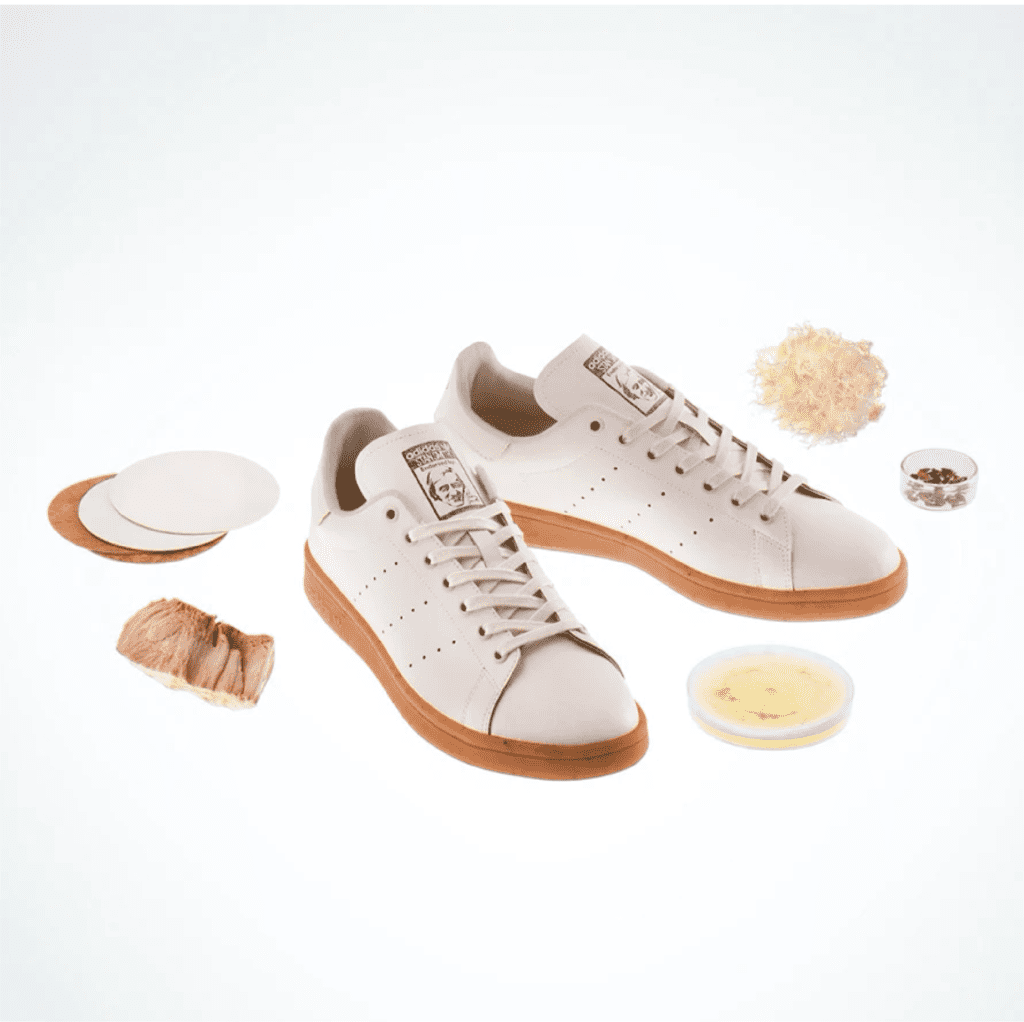
Adidas® has begun using iconic and nostalgic products, such as the Stan Smith trainer to land their eco message democratically with material twist. Stan Smith Mylo™ uses mycelium, which is a sprawling, renewable, interlaced web that threads through soil; mushrooms are the fruit of mycelium. Adidas claims this is a major step forward into creating footwear products that are truly made with nature.
Another example is Nike® dipping their toe in the conscious consumer market by producing “Space Hippies,” an engineered recycled shoe where convergent and divergent thinking is a combined initiative to shape better design decisions for their future. Additionally, they’ve recently launched and re-imagined a number of iconic trainers such as Blazer and Pegasus with a more responsible perspective in terms of material and manufacture. Nike has also ensured USA team athletes grace the Tokyo Olympic podiums whilst being eco-friendly; the brand has introduced a new sustainable version of the Nike “Glide” Flyease made with at least 20% recycled materials.
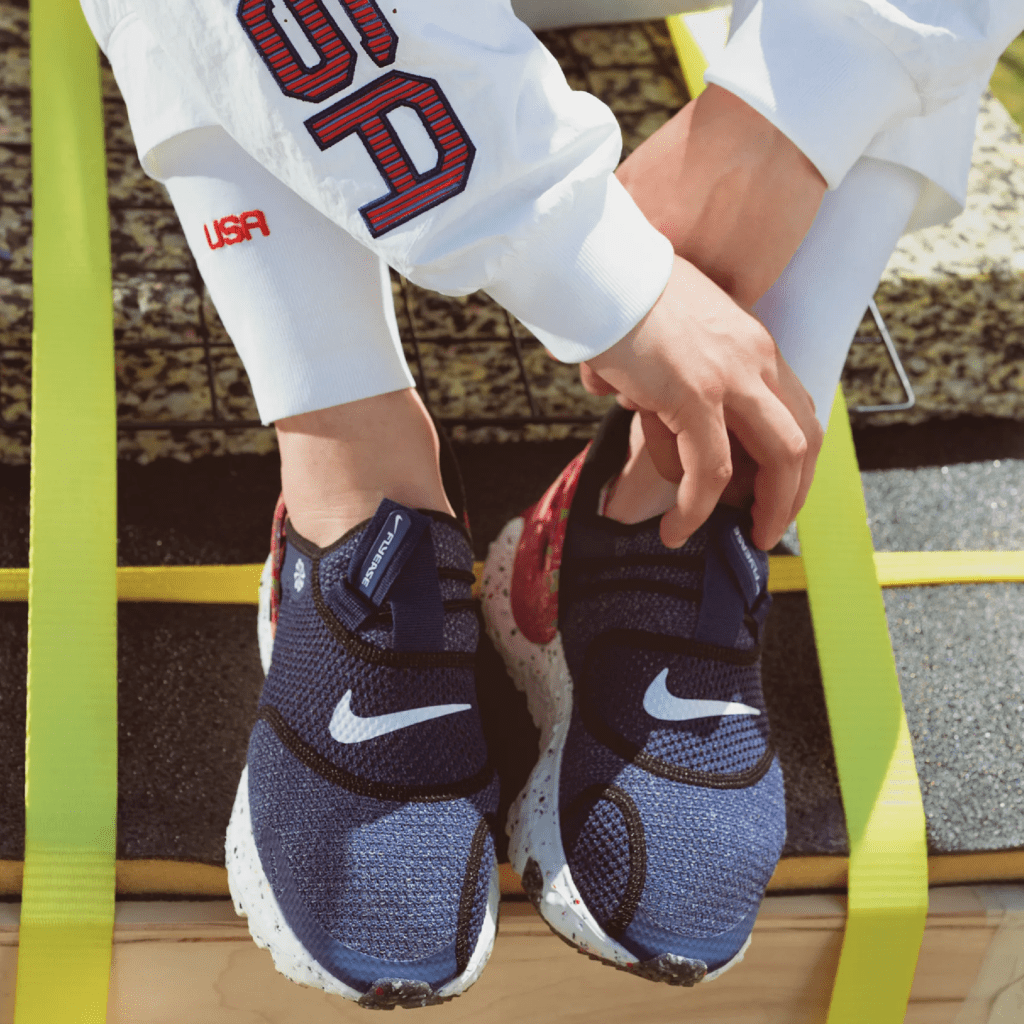
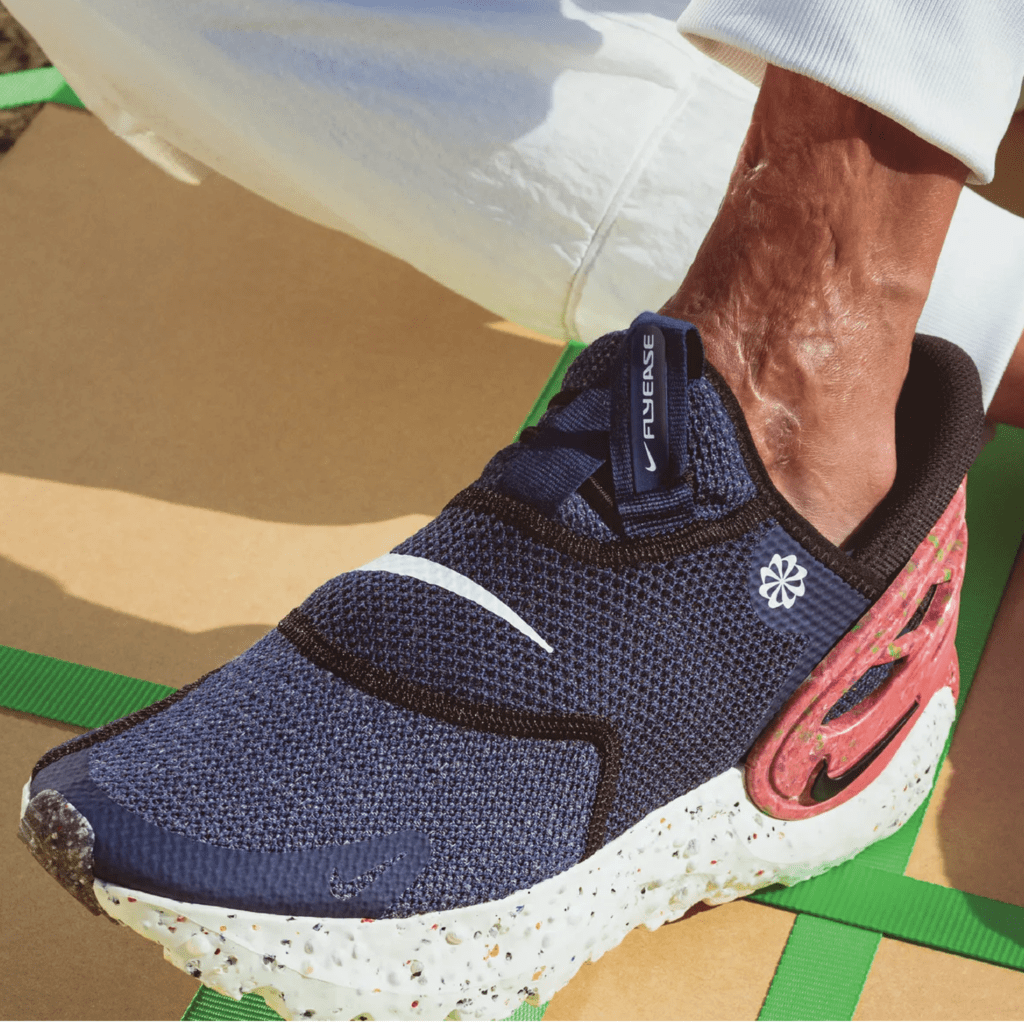
Gone are the days where brands’ initial development processes were based solely on seasons and trends. Today’s brands search to express ideals based around social, environmental and governance partnered with the rise of data. This has been evident when seen through the lens of our post-COVID lifestyles changing, along with hybrid working, season-less approaches to consumerism, and increased efforts to integrate circular models.
Drawing on one of these parallels during the pandemic, we’ve all experienced a new relationship with nature and feeling the benefits of health and well-being to organise our lives in new ways. Health can definitely be interpreted as a new social identifier, where we’ll have the ability to share our physical goals, techniques, results and more on apps and social media.
At the same time, embracing the outdoors has subsequently boosted demand and new requirements from materials. For example, future-proof performance/outdoor fabrics may guide us to rethink what we need from clothing and accessories. Perhaps qualities like increased durability, water resistance, thermal, breathable, self-healing and anti-bacterial finishes may become more commonplace as these offer an increased sense of protection against natural elements, pollution and viruses.
New Materials and design changes are evolving quickly, so the material industry is pivoting for problem-solving and adapting creative thinking for today’s challenges. As a result, it is imperative to empower creatives in understanding the role and influence they can play in transforming industries and realise the creative opportunities that arise from it. As one example, I’m a big advocate for digital sourcing as it has an inclusive “manifesto” – no one is an outsider. The democratic reach of digital sourcing is important to keep agility in future workflows.
Material Exchange is on the leading edge of innovation and material sourcing; be sure to subscribe to the newsletter for more knowledge, ideas, and connections you can use for your brand in fashion, footwear, and/or material production business.
Check out our webinars
We’ve got a wide range of informative, inspiring webinars in our library of events. Take a look to find one that sounds interesting. And feel free to reach out if there’s something you’d like us to cover that you don’t see!
Related content
Want to chat?
We’d love to hear from you. Reach out to see how we could work together.




